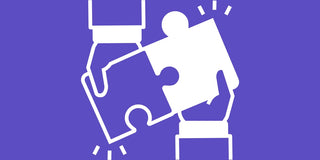Author: L. Padmaswathy (Counselling Psychologist)
Workplace burnout has emerged as a critical concern in today’s fast-paced and demanding work environments, characterized by emotional exhaustion, depersonalization, and a diminished sense of personal achievement. This state of chronic stress affects employees across various sectors, leading to significant declines in mental health and overall well-being. The symptoms of burnout often manifest in feelings of overwhelm, irritability, and a pervasive sense of discouragement, creating a vicious cycle that hampers productivity and morale.
The impact of workplace burnout on mental health is profound. Employees experiencing burnout may face anxiety, depression, or even more severe mental health disorders. Prolonged exposure to high-stress environments can lead to physical health issues as well, including insomnia, heart disease, and weakened immune response — all of which are interconnected with mental health. As employees become increasingly detached from their work, their ability to engage meaningfully with colleagues and responsibilities diminishes, creating a toxic atmosphere that can permeate throughout the organization.
Organizations play a crucial role in either mitigating or exacerbating burnout. High workloads, lack of control, inadequate support, and a non-inclusive culture are significant contributors to burnout. When companies fail to provide resources such as mental health support, flexible working arrangements, or opportunities for professional development, they risk losing valuable talent. Employees who feel undervalued or overwhelmed are more likely to disconnect emotionally and physically from their jobs, leading to increased absenteeism and turnover rates.
Addressing workplace burnout requires a multifaceted approach. Employers must prioritize mental health initiatives, empowering employees by promoting a healthier work-life balance. Implementing policies that encourage regular breaks, limit excessive overtime, and allow for flexible schedules can foster a more supportive environment. Additionally, creating channels for open communication and taking employee feedback seriously can help organizations identify stressors before they escalate into burnout.
Training managers to recognize the signs of burnout and providing them with tools to support their teams can also be transformative. Equipping leaders with skills in empathy and active listening can pave the way for a more compassionate workplace culture. Regular training sessions focused on resilience and stress management techniques can empower employees to develop personal coping strategies, mitigating the risk of burnout.
Furthermore, fostering a sense of community through team-building activities or wellness programs Like Employee Assistance Program (EAP) which delivers prompt assistance and support to improve employee wellbeing and overall health.enhances connections among employees and promotes a collaborative atmosphere. Recognizing and celebrating achievements, no matter how small, can boost morale and reinforce a sense of purpose within the team.
In conclusion, workplace burnout poses serious implications for employees' mental health, impacting not only individual well-being but also organizational performance. By adopting proactive strategies and prioritizing mental health within the workplace, organizations can cultivate a healthier, more engaged workforce. In doing so, they not only protect their most valuable asset — their employees — but also cultivate a culture of resilience and productivity that benefits everyone.




























N.Bhuvaneswari
Very informative article. This article talks about the employee’s well-being as well as employer’s challenge to cope up the present condition at the same time not to loose the talented employees. Awesome! Loved reading it.